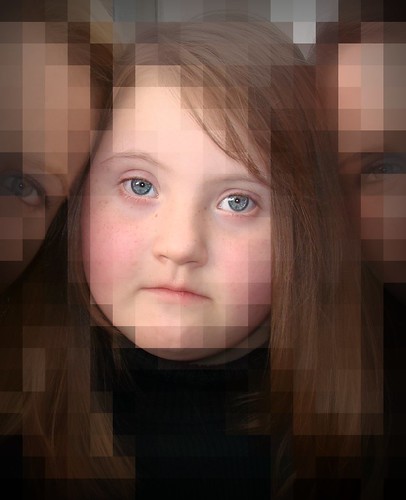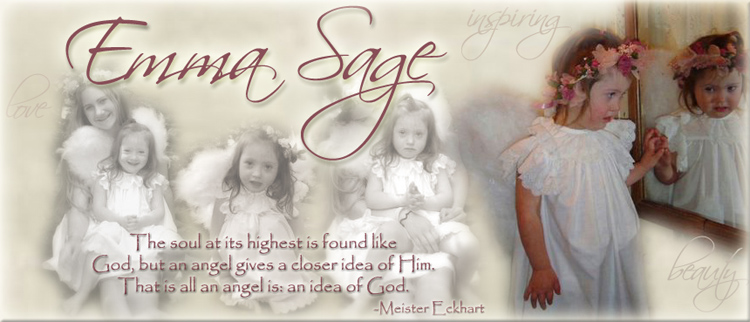
There are three classifications of Trisomy 21 [Down syndrome] ~
Nondisjunction - If a sperm or egg with an abnormal number of chromosomes merges with a normal mate, the resulting fertilized egg will have an abnormal number of chromosomes. In Down syndrome, 95% of all cases are caused by this event: one cell has two 21st chromosomes instead of one, so the resulting fertilized egg has three 21st chromosomes.
Robertsonian Translocation- Three to four percent of all cases of trisomy 21 are due to Robertsonian Translocation. In this case, two breaks occur in separate chromosomes, usually the 14th and 21st chromosomes. There is rearrangement of the genetic material so that some of the 14th chromosome is replaced by extra 21st chromosome. So while the number of chromosomes remain normal, there is a triplication of the 21st chromosome material. Some of these children may only have triplication of part of the 21st chromosome instead of the whole chromosome, which is called a partial trisomy 21. Translocations resulting in trisomy 21 may be inherited, so it's important to check the chromosomes of the parents in these cases to see if either may be a "carrier."
The remainder of cases of trisomy 21 are due to mosaicism: Mosaic Down syndrome happens when a person has a percentage of cells with an extra 21st chromosome and the remaining cells are unaffected. This type of Down syndrome accounts for about 2%-4% of the cases of Down syndrome.

Emma Sage has Mosaic Down syndrome.
What is Mosaicism?
from Dr. Len Leshin, MD, FAAP
Every cell in the human body comes from one initial cell: the fertilized egg, which is also called the zygote. After fertilization, the zygote then proceeds to divide. As new cells form, the chromosomes duplicate themselves so that the resulting cells have the same number of chromosomes as the original cell. However, mistakes sometimes happen and one cell ends up with a different number of chromosomes. From then on, all cells originating from that cell will have the different chromosomal number, unless another mistake happens. (All like cells originating from a single type of cell is called a cell line; for example, the skin cell line, the blood cell line, the brain cell line, etc.)
When a person has more than one type of chromosomal makeup, that is called mosaicism, like the mosaic style of art in which a picture is made up of different colors of tiles. In Down syndrome, mosaicism means that some cells of the body have trisomy 21, and some have the typical number of chromosomes.
Two very good resources regarding Mosaic Down syndrome are the International Mosiac Down syndrome Assocation and Mosaic Moments.

7 comments:
Great explanation! Thank you.
Love you
Does Emma Sage have Mosaic Down Syndrome?
Hi Chris....it was so great seeing you on Sunday!
Yes, Emma Sage has Mosaic T21.
I was great seeing you too--sorry I missed the caption under the ES's photo when I posted my last comment. Figured she did--hence the post.
Such a beautiful, beautiful little one.
I didn't realize she has Mosiac Ds! And I've been reading your blog for years! Silly me.
Down Syndrome occurs when there is the presence of an extra chromosome, chromosome 21, in the DNA chain caused by an error or mis-division of chromosomes in either the egg or the sperm cell, before they unite to form the fertilized egg called a zygote. All cells subsequently produced from that zygote with the extra chromosome 21 will also have the extra chromosome, resulting in Down Syndrome, technically known as Trisomy 21.
Mosaic down syndrome
Post a Comment